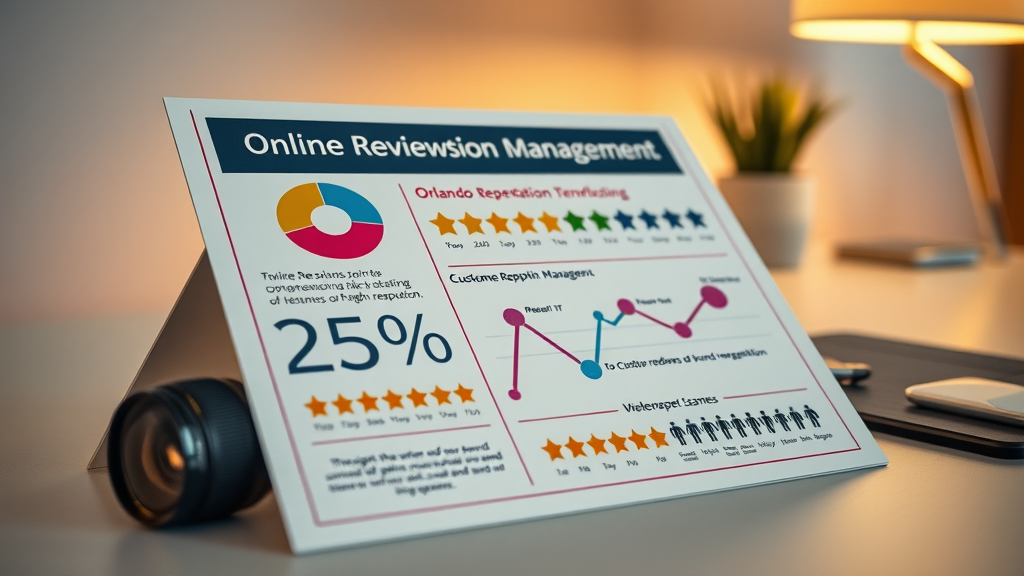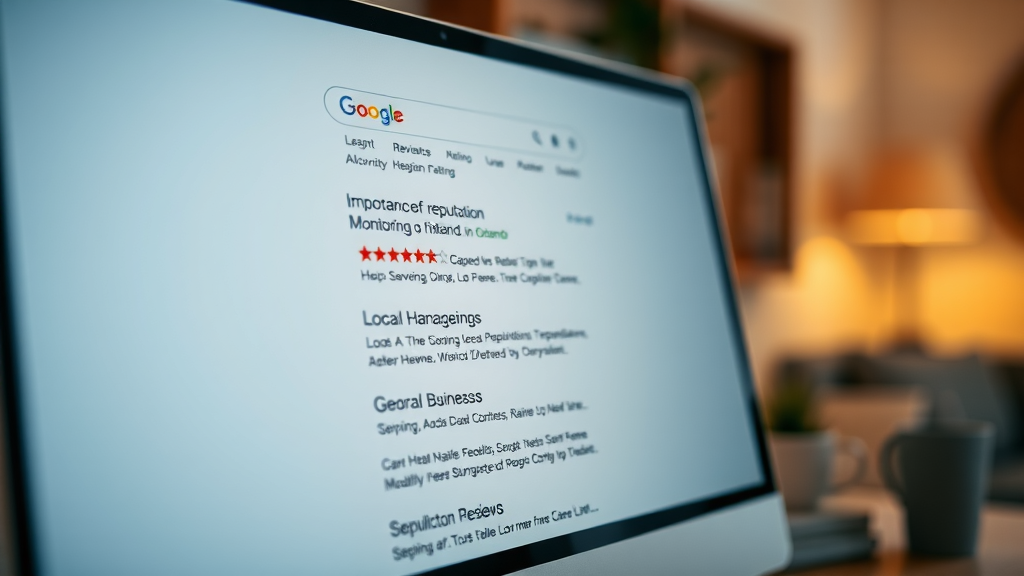Did you know businesses with a well-defined marketing strategy are over 300% more likely to see successful campaigns ? Before you pour your hard-earned dollars into the next ad, it’s vital to ensure your marketing efforts are built on a strong strategy foundation. In this comprehensive guide, you’ll uncover expert steps and actionable insights to maximize every cent spent on your marketing campaigns, boost your ROI , and outshine competitors in today’s crowded digital landscape. Why a Robust Marketing Strategy is Crucial Before Investing in Ads Investing in ads without a robust marketing strategy is like setting out on a road trip without a map—you may spend a lot and still end up lost. A thoughtful strategy defines your path, aligns your marketing objectives with business goals, and ensures your marketing dollars aren’t wasted. Practical examples abound: businesses that skip strategy often see high ad spend but low conversion, while those who plan carefully maximize both reach and efficiency. Take for instance a company that rushed into social media ads without understanding their target audience . Despite a sizable investment, their customer engagement stayed stagnant. By pausing to fine-tune their marketing plan —conducting market research , setting clear objectives, and picking the right media channels —they later turned those same marketing dollars into a steady stream of high-quality leads. The bottom line? An effective marketing strategy must be your starting point, not an afterthought. Startling Marketing Statistics: The High Cost of Skipping Strategy Research reveals that companies lacking a clear marketing strategy waste up to 25% of their total ad budget due to misguided efforts. According to the Content Marketing Institute, “Businesses with a defined marketing strategy are 313% more likely to experience success in their campaigns.” This is because every marketing tactic becomes more precise, targeted, and measurable when rooted in a strategic plan. Additionally, organizations that neglect to align their marketing campaigns with business goals often fall behind their competitors who leverage key performance indicators to continuously improve. "Businesses with a defined marketing strategy are 313% more likely to experience success in their campaigns." – Content Marketing Institute How an Effective Marketing Strategy Maximizes Every Ad Dollar A solid marketing strategy acts as a filter that prioritizes your spending—directing your budget towards the tactics with the greatest potential for ROI. For example, when you’ve identified your ideal customer using market research , each ad is tailored to resonate with their needs, increasing your conversion rate . Data-backed strategies empower businesses to monitor what’s working through key performance indicators and to adjust their marketing mix swiftly, ensuring every dollar spent produces measurable returns. Think of it as a feedback loop—when one marketing campaign outperforms others, you can allocate more resources to it and reduce spend on underperforming tactics. This ongoing optimization is impossible without first building a robust marketing strategy. When executed properly, an effective marketing strategy reduces waste, increases brand awareness, and yields long-term growth for your business. What You'll Gain from Mastering Your Marketing Strategy Learn how to build an effective marketing plan that delivers ROI Discover actionable steps to identify your target audience and set marketing objectives Get templates and expert advice for designing high-performing marketing campaigns See how to leverage social media, content marketing, and email marketing effectively Find out how to track your marketing tactics with performance indicators for continuous improvement Building Your Marketing Strategy Foundation Every winning marketing strategy starts with a solid foundation—one that aligns your organizational vision with actionable, measurable marketing objectives . This stage demands an honest audit of your strengths, weaknesses, opportunities, and threats (SWOT analysis), followed by in-depth market research to understand competitors and your target audience . Identifying what sets your product or service apart is key. A thoughtful foundation helps you create resonant messages and select the right marketing mix for your goals. Plus, this groundwork enables you to confidently choose marketing channels—everything from social media to content creation—that amplify your message. Your strategy’s foundation will guide consistent branding, tone, and marketing tactics across all touchpoints. Aligning Your Marketing Plan with Business Goals A marketing plan should always ladder up to your big-picture business ambitions. Whether your goal is to increase brand awareness , drive website traffic, or improve conversion rates, every marketing tactic needs to align with your endgame. By mapping business goals to specific marketing objectives, you create a blueprint for success—every effort, from content marketing to email campaigns, now has a clear purpose and expected outcome. For example, if your business goal is to grow your customer base by 30% this year, your marketing plan might prioritize target market identification, leveraging data tools and analytics to zero in on the right audience. Success then becomes measurable by tracking performance indicators related to new leads, engagement, and sales conversions—a true north for refining your marketing efforts. The Role of Market Research in Effective Marketing Strategy Market research is the engine behind a smart marketing strategy . By gathering and analyzing data on customers, competitors, and market trends, you avoid assumptions and base your tactics on real-world insights. Modern market research tools—ranging from online surveys to competitor audits and behavioral analytics—offer a comprehensive view of what your target audience needs and how your product or service fits into their lives. This research shapes each aspect of your marketing plan, from positioning and messaging to channel selection and budgeting. For instance, understanding competitors’ strengths and weaknesses helps you identify gaps and positioning opportunities. Likewise, deep demographic and psychographic research clarifies how to segment your customer base, unlocks new high-potential markets, and guides content creation that resonates. Identifying Your Target Audience Using Modern Data Tools Knowing your target audience ensures your message hits the mark and personalizes the overall customer journey. Today’s marketers rely on powerful data tools to segment audiences more accurately than ever before. Tools like Google Analytics, social media analytics, and CRM platforms help parse data into actionable insights by revealing buying patterns, user interests, and demographic details. Demographic research Behavioral analytics Social listening Customer surveys Using these tools, you can develop detailed customer personas, anticipate needs, and tailor your marketing mix accordingly. This attention to detail helps ensure your marketing tactics—from blog posts to paid ads—deliver content that attracts, engages, and converts your ideal customer. Crafting an Effective Marketing Plan for Sustainable Growth An effective marketing plan serves as both a roadmap and a checklist for achieving your marketing objectives. It translates high-level strategy into concrete, measurable steps—making sure your marketing efforts build momentum over time. By outlining the channels, tools, and marketing tactics you'll use, this plan ensures your team takes decisive action at every stage, aligning resources where they matter most. Sustainable growth springs from ongoing measurement, analysis, and adjustment of your marketing strategies. This means setting benchmarks, tracking key performance indicators , and tweaking tactics swiftly in response to results. With a detailed marketing plan, you maintain focus during both wins and setbacks, all while cultivating continuous improvement and innovation in your marketing efforts. Setting SMART Marketing Objectives and Key Performance Indicators Setting SMART (Specific, Measurable, Achievable, Relevant, Time-bound) objectives is critical for transforming vision into impact. Each marketing objective—whether it’s to grow your social media presence or ramp up email subscriptions—needs a correlated metric and timeline. Key performance indicators (KPIs) turn your objectives into tangible targets and benchmarks, helping you quantify progress and manage marketing efforts proactively. Objective Metric Timeframe Example Increase brand awareness Social followers Q2 +25% in 3 months Boost website traffic Sessions Monthly +10% MoM Generate leads Form submissions Ongoing 50 leads/month Improve conversion rate Sales conversion Quarterly +5% per quarter Analyzing Your Marketing Mix: Channels, Tools, and Tactics A well-rounded marketing mix leverages multiple channels and tactics to reach customers wherever they are. Start by evaluating which types of content, messaging, and platforms best serve your audience and strategy. Today, leading brands blend social media , content marketing , and email marketing to maximize reach, nurture leads, and drive conversions. Social Media Email Marketing Content Marketing Paid Advertising Influencer Outreach Your marketing mix becomes the engine for sustainable growth when each piece works together. For example, content shared via blog posts can be amplified on social channels, included in email newsletters, and supported by targeted paid advertising. Effective marketers also routinely reassess their marketing channels, testing and measuring new tactics to see which yield the best ROI and audience engagement. Selecting the Right Marketing Channel for Your Marketing Strategy Choosing the right marketing channel is vital for ensuring your message reaches the appropriate audience at the right time. The best-performing channels often depend on your product, objectives, and where your target market spends time online. For instance, B2B companies might invest in LinkedIn and email marketing, while B2C brands thrive on Instagram and TikTok. It pays to experiment—start with industry benchmarks, but track your own data to pinpoint which marketing channel delivers the most qualified leads and best ROI. Cross-channel synergy, where multiple channels reinforce one another, can drive even higher performance from your marketing strategy . Social Media: Where to Focus for Maximum Impact Social media remains one of the most dynamic channels in any marketing plan—if executed with a clear strategy. To maximize impact, focus your efforts where your target audience actually engages. Analyze demographics and platform behaviors: Instagram may work for younger audiences, while LinkedIn appeals to professionals. Use analytics tools to measure click-through rates, shares, and engagement, then amplify top-performing content. Consider adopting specialized tactics like influencer partnerships, user-generated content, or targeted stories and ads. A channel-specific approach within your broader marketing strategy ensures that each post, story, and tweet is intentional, actionable, and in line with your overall marketing objectives. Content Marketing: Creating Value and Driving Results Content marketing centers on delivering valuable, relevant content to attract and retain your target audience. Blog posts, whitepapers, infographics, and videos not only educate and engage but also position your brand as a trusted authority. For maximum results, tie every piece of content to a specific marketing objective , such as increasing brand awareness or nurturing leads. Integrating content marketing across your marketing mix also boosts SEO, provides rich material for social and email channels, and creates versatile assets for your marketing campaign . By tracking metrics like time on page, organic search rankings, and shares, you ensure continued alignment with your marketing strategy goals. Email Marketing: Personalized Engagement at Scale Email marketing gives you a direct, personal line to your ideal customers. Segmented lists, automated journeys, and tailored offers ensure each message matches the recipient's interests and stage in the buyer journey. To optimize performance, track open rates, click-throughs, and conversion rates as part of your performance indicators . Use A/B testing of subject lines, timing, and content for ongoing improvements. When executed within a strategic framework, email supports all phases of the customer journey—building awareness, nurturing leads, and driving repeat sales—while generating some of the highest ROI among digital channels. Designing Effective Marketing Campaigns: Best Practices for 2024 In 2024, successful marketing campaigns are more integrated than ever before. Each campaign should be built around clear objectives, unified messaging, and a deliberate mix of marketing tactics. Audience expectations for personalization and authenticity continue to rise, making it crucial to use insights from data and customer feedback. Best practices include mapping the customer journey, creating multi-channel touchpoints, and regularly reviewing campaign performance against established KPIs. Agile teams that adjust quickly based on real-time analytics are set to outperform those locked into static plans. Effective marketers treat every campaign as a chance to improve future efforts by collecting and applying lessons learned. Integrating Marketing Tactics for Cohesive Marketing Objectives The strongest marketing strategies connect multiple marketing tactics under a single, cohesive message. This integration ensures prospects experience your brand consistently, no matter how they discover you. For example, a blog post can introduce a new product, social media can amplify it, and an email campaign can drive purchase intent—all reinforcing the same core message and objectives. "Your marketing tactics are only as strong as your underlying marketing strategy." – Neil Patel When you coordinate marketing channels and tactics, you maximize customer touchpoints and conversion opportunities. This synergy not only builds brand awareness but also ensures every marketing effort contributes directly to your business growth. A/B Testing and Iterative Improvement for Effective Marketing Strategy Continuous improvement is a hallmark of an effective marketing strategy . Through A/B testing, you compare versions of ads, emails, or landing pages to identify which resonates best with your audience. Insights from these experiments empower you to refine messaging, optimize CTAs, and improve conversion rates. Over time, iterative improvement turns incremental gains into major performance growth. Savvy marketers document each test’s lessons, compiling a library of insights that fuel future marketing campaigns. This culture of learning and adaptation is what sets top performers apart in today’s ever-changing digital landscape. Tracking Success: Key Performance Indicators to Measure Marketing Strategy Measuring progress is crucial to the success of any marketing strategy . By tracking the right key performance indicators (KPIs), you gain clarity on what’s actually working and where to improve. Quantitative metrics—such as website traffic or conversion rates—reveal tangible results, while qualitative indicators—like customer satisfaction signals or sentiment analysis—add useful context. The smartest marketing strategies blend hard numbers with real customer feedback, giving a holistic view of performance. This enables businesses to adjust quickly, double down on high-performing marketing tactics, and retire underachieving ones without delay. Quantitative vs. Qualitative Performance Indicators Quantitative indicators track hard data like leads generated, sales closed, or social media shares. These metrics provide concrete evidence of your marketing efforts’ impact. On the other hand, qualitative indicators —like testimonials, reviews, or survey responses—offer valuable insights that numbers alone can’t capture. Together, these performance indicators help you understand not just how many people you’re reaching, but how they perceive your brand and marketing campaigns. The best strategies regularly balance both forms of feedback to fuel ongoing refinement and improvement. Choosing the Right Metrics for Your Marketing Plan Not every business will measure success with the same KPIs. Selecting the right metrics depends on your marketing objectives , customer journey stage, and chosen marketing channels . For some, email open rates and click-throughs might be key; for others, it’s organic search traffic or influencer engagement. Define which outcomes mean success for your marketing plan, and make sure you can track them precisely. This focus not only guides your marketing tactics but also provides the data needed for agile decision-making and continual strategic improvement. Case Study: A Real-World Example of an Effective Marketing Strategy To see an effective marketing strategy in action, consider Company X, a mid-sized ecommerce firm. Initially, the company poured resources into paid ads, but sales plateaued and costs soared. After recalibrating—crafting a detailed marketing plan, investing in market research, and refining their target audience—they reduced ad spend by 20% and boosted ROI by focusing on channels that worked best for their ideal customer . How Company X Reduced Ad Spend and Boosted ROI by Refocusing on Marketing Strategy Company X started by aligning all marketing tactics to core business goals, then leveraged analytics to uncover which channels drove the best returns. By emphasizing organic content marketing, high-value email campaigns, and nurture-based social ads, they saw rising conversion rates and a growing customer base. Their marketing mix became more efficient, and they tracked improvements via customized key performance indicators. The shift proved that a strong marketing strategy, built on data and executed with discipline, can generate more leads, better conversions, and much more sustainable growth than raw ad spend alone. Lessons Learned: Actionable Takeaways You Can Apply The story of Company X highlights the importance of continuously revisiting your marketing plan. Always measure performance, remain agile in your tactics, and keep customer needs at the center of your strategy. With these lessons in hand, even small businesses can punch above their weight—delivering results that grow over time. Build your own approach, test new marketing channels, and never hesitate to refine your strategy outlines as markets evolve. Optimizing Your Marketing Strategy: Tools and Resources The right tools can supercharge your marketing strategy by automating manual work, delivering sharper insights, and scaling success across channels. Today’s digital landscape offers countless platforms to manage analytics, automate email marketing, and streamline content publishing. Make data-driven decisions by integrating multiple tech solutions, and pursue growth with a mindset of constant learning—helping you keep pace with ever-changing buyer expectations and industry trends. Must-Have Tools for Designing and Implementing Marketing Plans Google Analytics SEMRush Mailchimp Hootsuite HubSpot Resources for Continuous Marketing Improvement Besides software, staying current with best practices matters. Follow thought leaders, read the latest blog posts, and participate in webinars. Investing in team training ensures everyone’s skills remain sharp, and your marketing efforts benefit from fresh, innovative tactics grounded in proven strategy outlines. Leverage marketing communities and forums to discuss campaign performance, swap actionable tips, and get feedback on your marketing plan from experts around the world. Expert Tips for Creating and Executing Your Marketing Strategy Focus on consistent branding across channels Test new marketing tactics frequently Collect and act on customer feedback Regularly revisit marketing objectives and KPIs Video: The Step-by-Step Guide to Developing Your Winning Marketing Strategy Watch: How to Build an Effective Marketing Plan from Scratch Check out our comprehensive video for actionable steps and expert insights to create a data-backed, impactful marketing strategy that delivers real ROI. Video: Marketing Channel Deep Dive — Comparing Social Media, Content, and Email See Which Channels Drive the Best ROI for Your Marketing Strategy This in-depth video analysis explores the strengths and weaknesses of the top marketing channels—equipping you to select and optimize those best aligned with your goals. People Also Ask: Common Questions about Marketing Strategy What are the 4 main marketing strategies? The four main marketing strategies are market penetration (growing sales in existing markets), product development (introducing new products to existing markets), market development (entering new markets with existing products), and diversification (exploring new products and new markets). Each strategy outlines a specific approach to grow your business and expand your customer base. What are the 7 steps of marketing strategy? The seven steps typically involve: 1) Market research, 2) Defining your target audience, 3) Setting marketing objectives, 4) Crafting the marketing plan, 5) Choosing marketing channels, 6) Implementing tactics, and 7) Measuring and optimizing campaign performance. These steps provide a structured framework for developing successful marketing strategies . What is the 3-3-3 rule in marketing? The 3-3-3 rule in marketing is a guideline for content review: your content must grab attention within the first 3 seconds, be understandable within 3 minutes, and be memorable for at least 3 days. This rule helps marketers design campaigns, especially on social media, that maximize engagement and retention. What is a good marketing strategy? A good marketing strategy is data-driven, aligns with business goals, and matches the needs of the target market. It’s flexible enough to adapt to market feedback, uses clear key performance indicators, and ensures that every marketing tactic supports well-defined objectives. Frequently Asked Questions About Marketing Strategy How often should you revisit your marketing strategy? It’s best to review your marketing strategy at least once each quarter, or whenever you launch a new product or see significant shifts in your market. Regular reviews ensure your tactics stay relevant and that you’re prioritizing the most effective marketing efforts for current business goals. What are essential elements of an effective marketing plan? An effective marketing plan includes clear objectives, a definition of your target audience, detailed marketing tactics, a defined marketing mix, budget allocation, performance indicators, and an ongoing measurement and optimization process. These elements ensure your marketing strategy drives real results. Summary: Elevate Your Business with a Thoughtful Marketing Strategy Never run ads without a data-backed marketing strategy Focus on your unique value proposition and the right marketing channel Use KPIs to continually improve your marketing tactics Align every marketing campaign with your broader marketing objectives Take the Next Step: Transform Your Marketing Strategy Into Action Ready to grow your business? Book your free marketing strategy session with our team today. Video: Real-Life Examples — Marketing Strategy Sessions with Our Experts Watch: How Businesses Like Yours Revolutionize Their Marketing Plans Curious how others have succeeded? Watch real case studies and get inspired to apply winning strategies to your own business. Before investing further in advertising, it’s crucial to establish a solid marketing strategy to ensure your efforts are effective and aligned with your business goals. The article “Develop a Winning Marketing Strategy: Step-by-Step Guide” provides a comprehensive roadmap, including conducting market research, defining clear objectives, and identifying your target audience. ( ama.org ) Additionally, “Marketing Strategy: Ultimate Guide to Driving Business Success” offers insights into creating detailed buyer personas and selecting appropriate marketing channels to reach your audience effectively. ( ecommercebridge.com ) By following these guides, you can build a robust marketing strategy that maximizes your advertising investments and drives sustainable growth.







 Add Row
Add Row  Add
Add 



Write A Comment